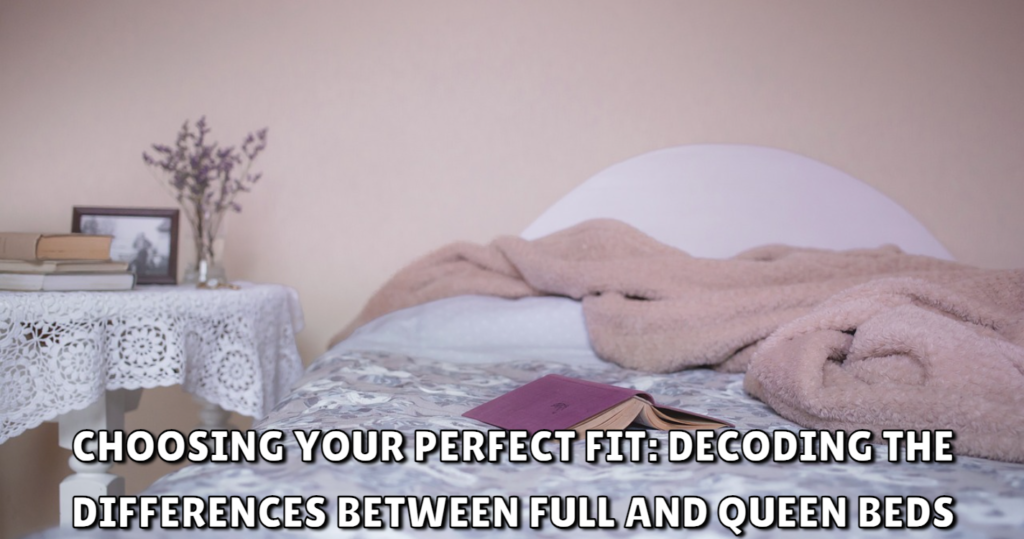Selecting a bed size can be difficult, and choosing between a full bed and a queen bed can often prove challenging. Both offer distinct advantages that meet different needs in different spaces and rooms; understanding their specific characteristics will enable you to make an informed decision that perfectly matches your space and lifestyle needs.

Dimensions and Space Requirements
Full Beds
Full Beds(sometimes called double beds) typically measure 54 inches wide by 75 inches long and provide more sleeping space than their twin counterparts. A full bed called a double bed is an excellent solution for single sleepers looking for an additional room compared to what twins provide.
Full beds are recommended for rooms measuring at least 10 feet by 10 feet to provide enough space for moving around and accommodating other furniture pieces.
Queen Beds:
Regarding measurements, queen beds measure approximately 60 inches wide by 80 inches long – more space for couples or individuals seeking extra room than full beds can provide. They’re an excellent solution if additional sleeping space is desired.
Room Fit: To accommodate maximum movement in and around the bedroom, a queen bed works best in rooms measuring at least 10ft by 11ft – providing enough room for additional furniture and easy mobility.
Comfort and Usability
Full Beds:
- For solo sleepers who prefer to sleep alone, full beds provide plenty of room to stretch out and can significantly enhance sleep quality compared to twin beds.
- Couples Can Find it Tight Fit: Full beds may be too cramped for couples, providing only 27 inches per person — less space than even a twin mattress would provide.
Queen Beds:
Queen beds provide plenty of space for two people to sleep peacefully without disturbing each other. Their extra width and length make them ideal for accommodating multiple occupants at once without creating disturbance.
Versatility: Queen beds are also highly suitable for guest rooms as they can meet various sleep requirements, from solo guests to couples.
Initial Cost Considerations
Initial Purchase:
Due to their larger size, the prices for queen beds, compared to full beds, tend to be more costly; however, prices can differ drastically depending on the features and options you choose.
Bedding and Accessories:
Bedding for queen beds tends to be slightly more costly than full bedding; additional expenses associated with queen-size bed frames and box springs could significantly increase total costs.
Who Should Opt For What?
Full Beds
These are an ideal option for teens and single adults. Given their compact nature, full beds are convenient for single adults living alone or those in college dormitories.
Ideal for smaller spaces: These chairs fit seamlessly in studio apartments or smaller bedrooms, providing maximum living space without compromising comfort.
Queen Beds:
Couples and guest rooms: Queen beds provide enough space for two individuals and are frequently found in master and spacious guest bedrooms.
Individuals who appreciate extra space: Even for single sleepers, a queen bed may offer greater comfort during restful slumber, especially those who tend to move around frequently during their restful slumber.
Conclusion
Selecting between a full and queen bed depends heavily on personal needs, room size, and budget. By understanding what each size offers in terms of benefits, you can select one that fits in your space while providing you with a restful night’s rest. Selecting the ideal bed size enhances room functionality, comfort, and overall sleep quality and should, therefore, form part of a home environment that provides optimal conditions.
